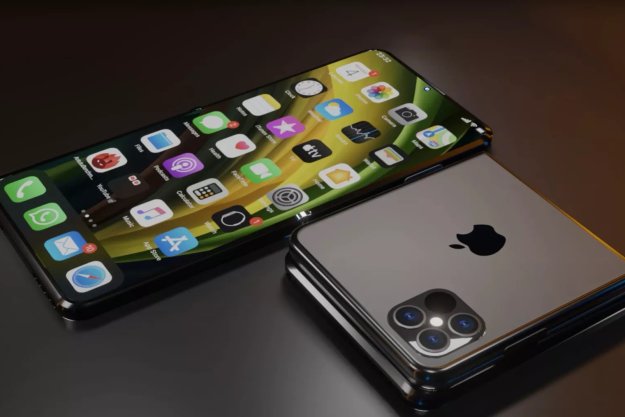When Apple removed Touch ID from the iPhone, it was considered a bold move. Users soon got used to it, though, and even began preferring Face ID as a replacement. But the last year has proven that there’s room in the world for multiple forms of biometric authentication. Sometimes it just makes sense to scan a fingerprint — and to that end, some rumors indicate that Apple may include a fingerprint sensor in the iPhone 13.
I hope that’s true. To be clear, I love Face ID. When I’m not reviewing an Android phone, I normally use an iPhone as my daily driver, and it just feels easier to use Face ID. In fact, I love Face ID so much that I don’t really mind having a notch. But it’s a pain to have to punch in my PIN code every time I want to use my phone with a mask — which these days, obviously, is a lot. A fingerprint sensor, on top of Face ID, would solve this.
I don’t want just any fingerprint sensor — it needs to be a really good one, like the Galaxy S21’s.
But I don’t just want any ol’ fingerprint sensor. Some sensors are better than others, and a bad one is simply frustrating to use. A fingerprint sensor that’s slow, or inconsistent, is so annoying that it can just push you to use a PIN unlock anyway.
The Samsung Galaxy S21’s fingerprint sensor is one of the good ones. The Galaxy S21 is actually the first, and at the time of this writing, the only, device to use Qualcomm’s second-generation ultrasonic sensor technology. This sensor is 77% larger than the previous-generation sensor, and 50% faster — and it shows. In my testing of the Galaxy S21, I’ve found that the new sensor is very responsive, and almost never fails. Apple could take a page out of Samsung’s book here.

Now, to be fair, Apple doesn’t have a history of shipping low-quality fingerprint sensors. The sensor in the iPhone SE is high in quality and responsive, as is the sensor in the 2020 iPad Air’s power button. That’s not to mention the fact that iOS has the software tools to back those devices’ fingerprint sensor — for example, the iPad Air prompts the user to set up a finger on each hand at setup to ensure they can get into their device when it’s rotated, and without having to think about.
I expect Apple’s first in-display fingerprint sensor to be of a similar, if not better, quality. In a device with Face ID, for example an iPhone 13, it could detect when a user is wearing a mask and prompt them to scan their fingerprint. It could do the same if it detects no face in view, like when the phone is flat on a table. Or the phone could use both authentication methods together to secure very sensitive information on the phone.
Apple has a strong history of making great fingerprint sensors — this should be another.
Of course, it’s entirely possible that Apple won’t include a fingerprint sensor in the iPhone 13 series at all. After all, the company is known for sticking with large feature changes to the product line — particularly for features as great as Face ID. If it does include a fingerprint sensor, however, and in a way that makes sense and works with Face ID, it will fundamentally change how people access their iPhone. No longer will they have to pick up their phone to get it to read their face, or change how they’re lying in bed, or just deal with typing the PIN code while they’re wearing a mask.
But only if it actually works as it should, like the Galaxy S21’s sensor does. We’ll have to wait and see what happens, but the Galaxy S21 sets a new standard for great in-display fingerprint sensors — and if the iPhone 13 comes close to it, I’ll welcome it happily.
Editors' Recommendations
- 5 phones you should buy instead of the iPhone 15
- This is our best look yet at the iPhone 16’s big design changes
- The DOJ has sued Apple over the iPhone. Here’s what it means for you
- 5 phones you should buy instead of the iPhone 15 Pro
- Why I ditched my iPhone 15 Pro for the Samsung Galaxy S24 Ultra


